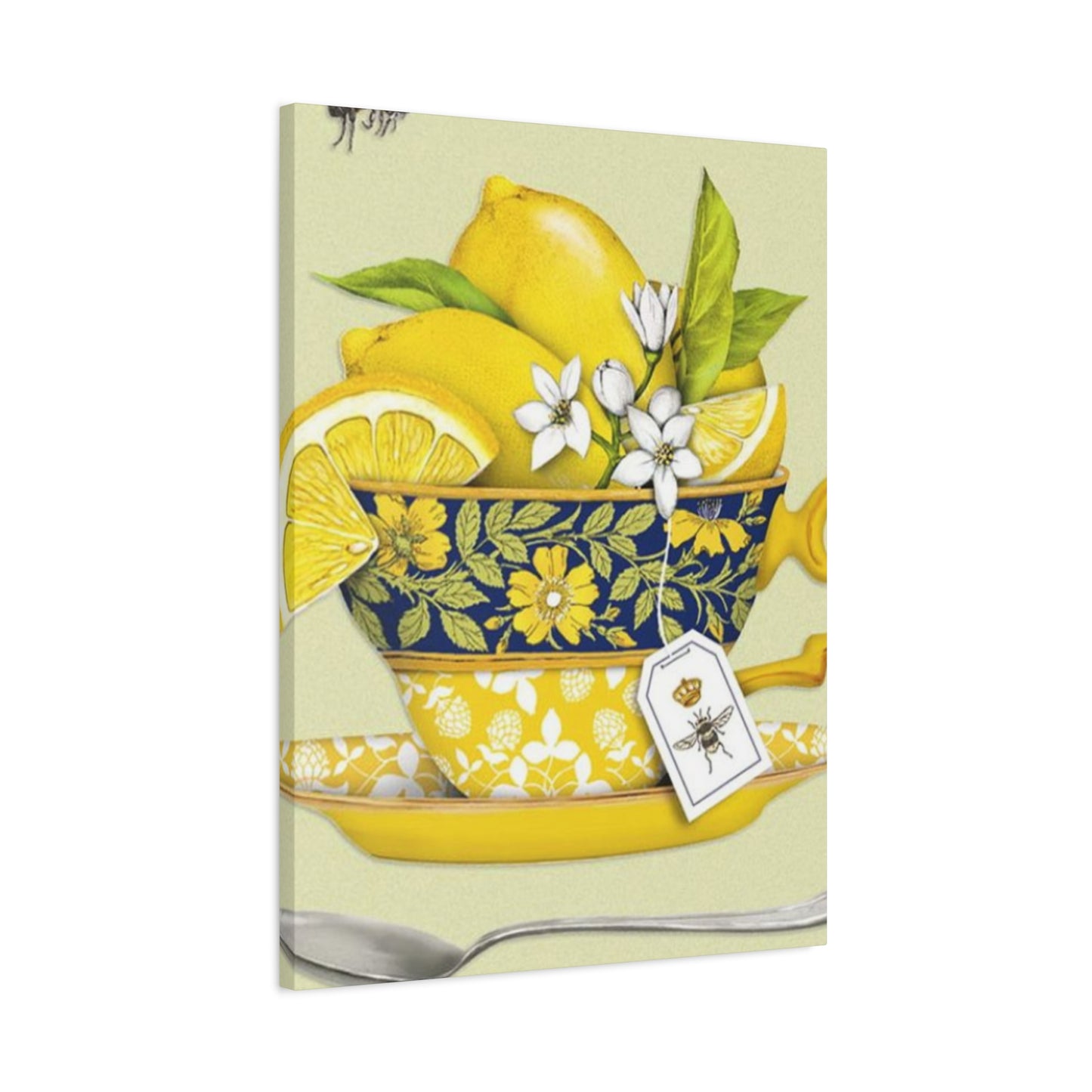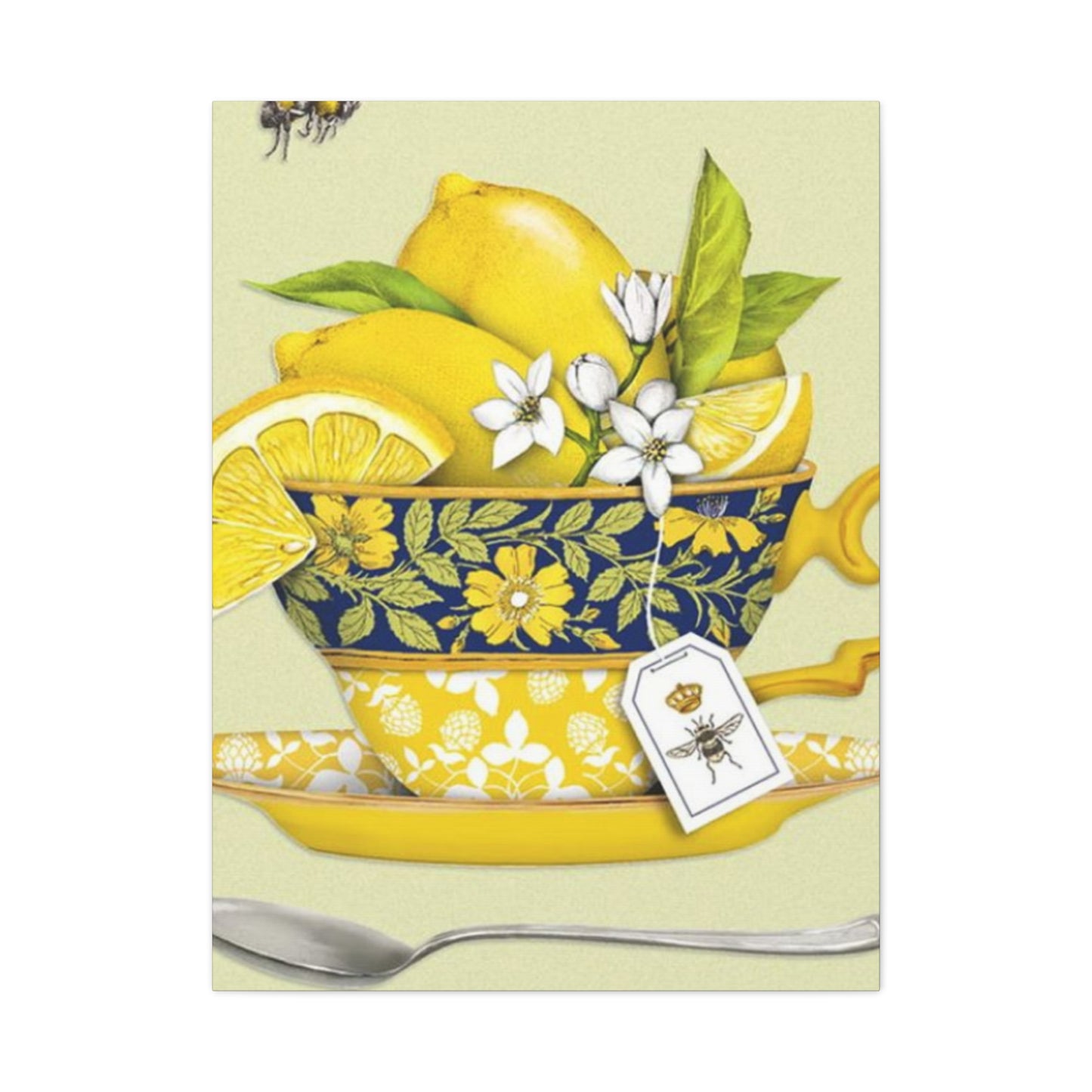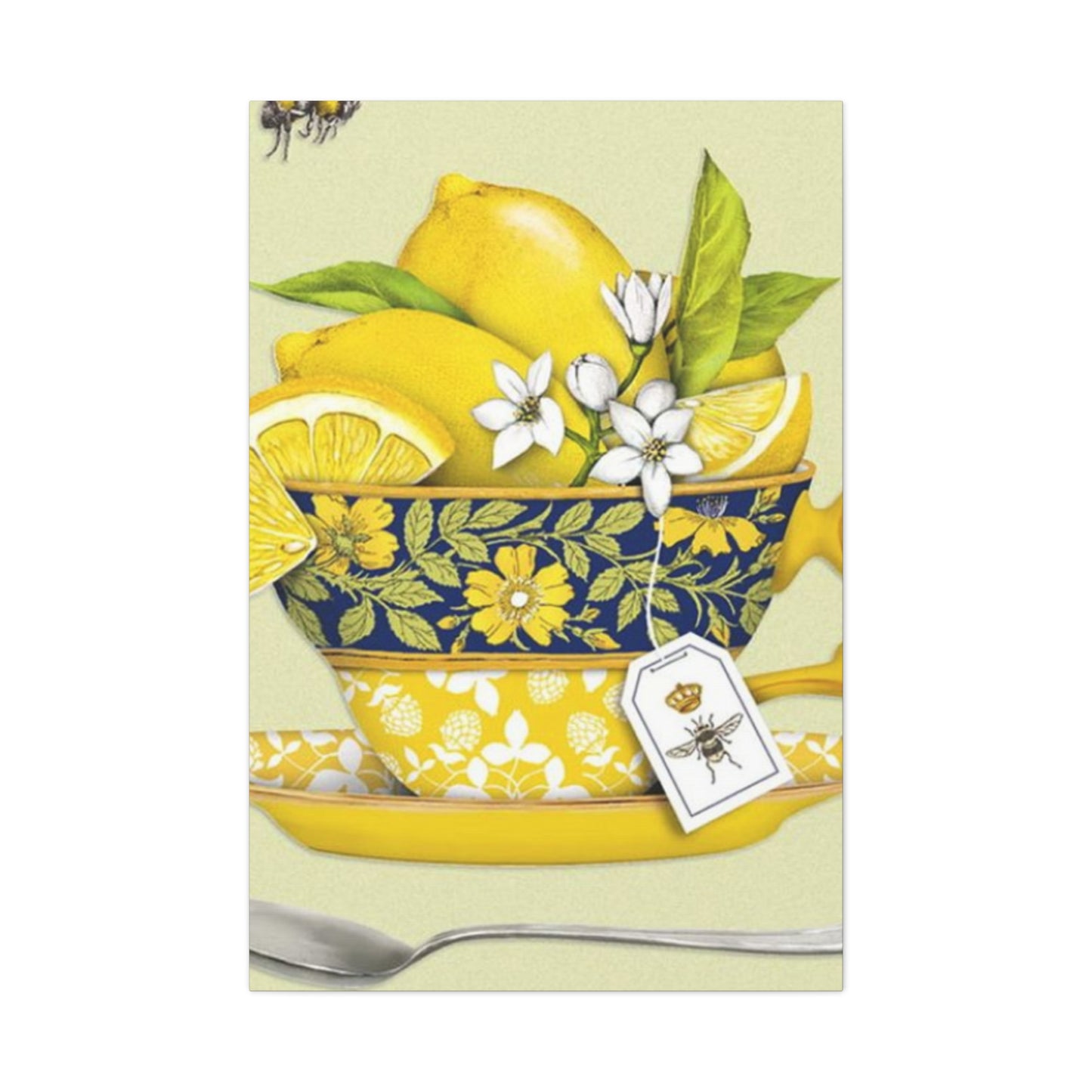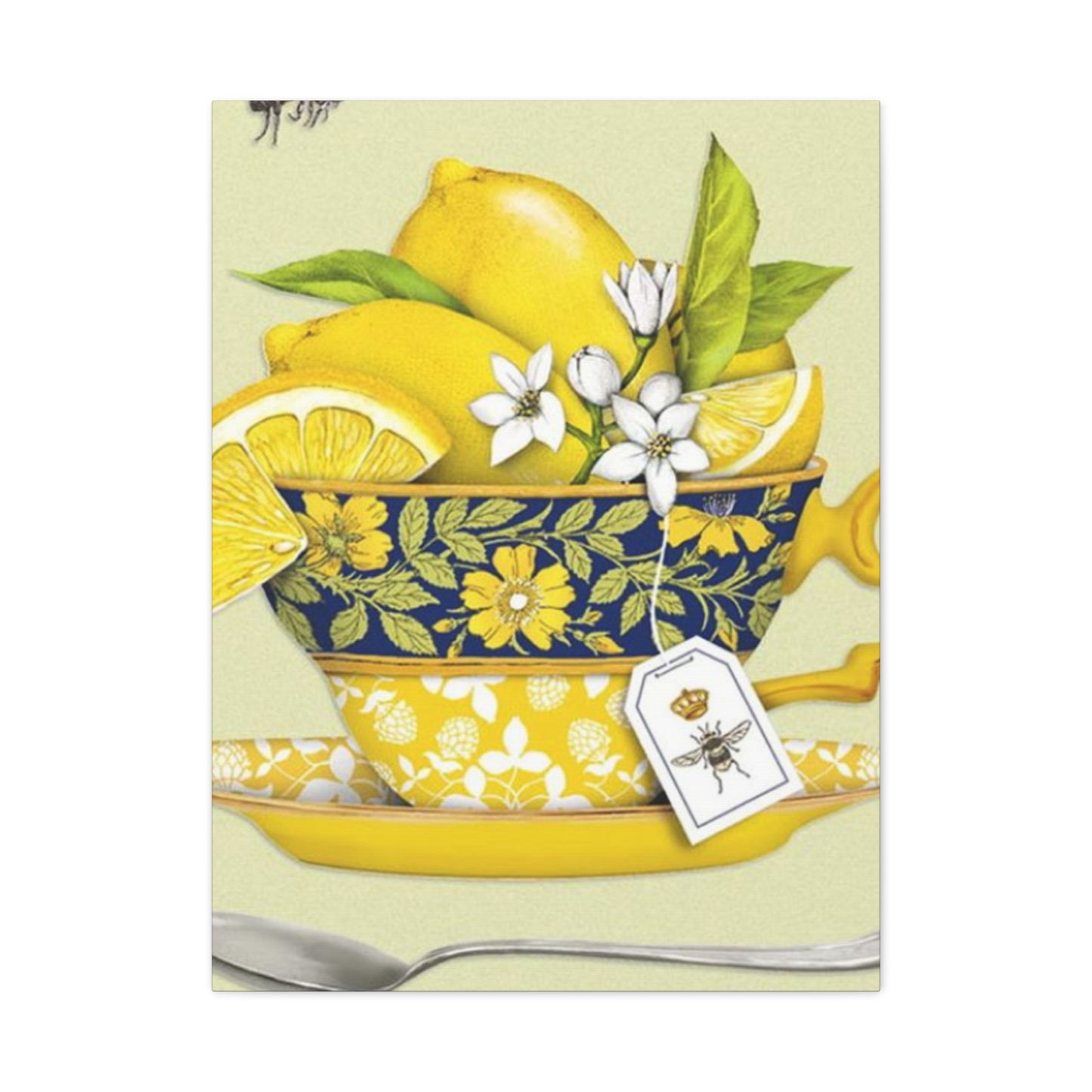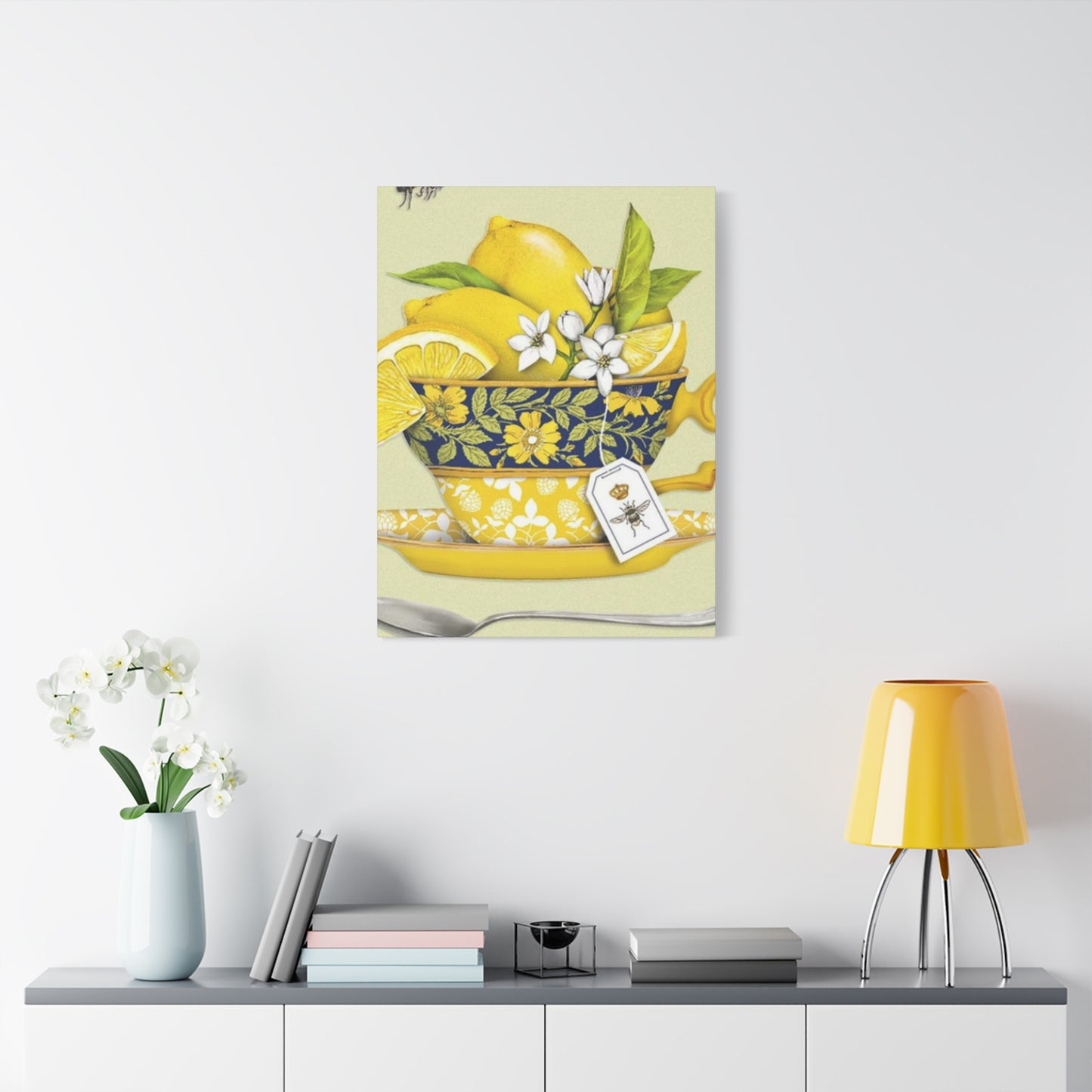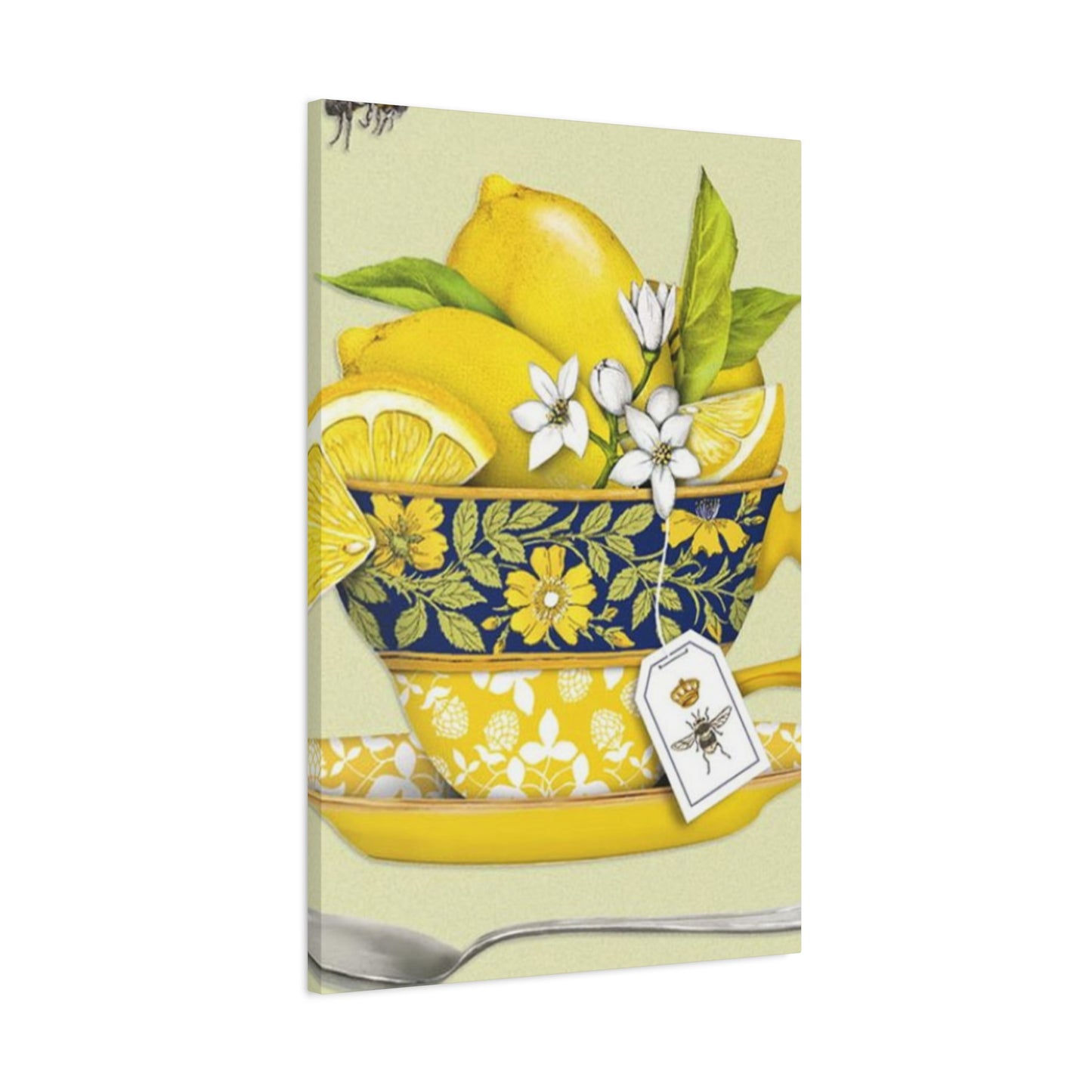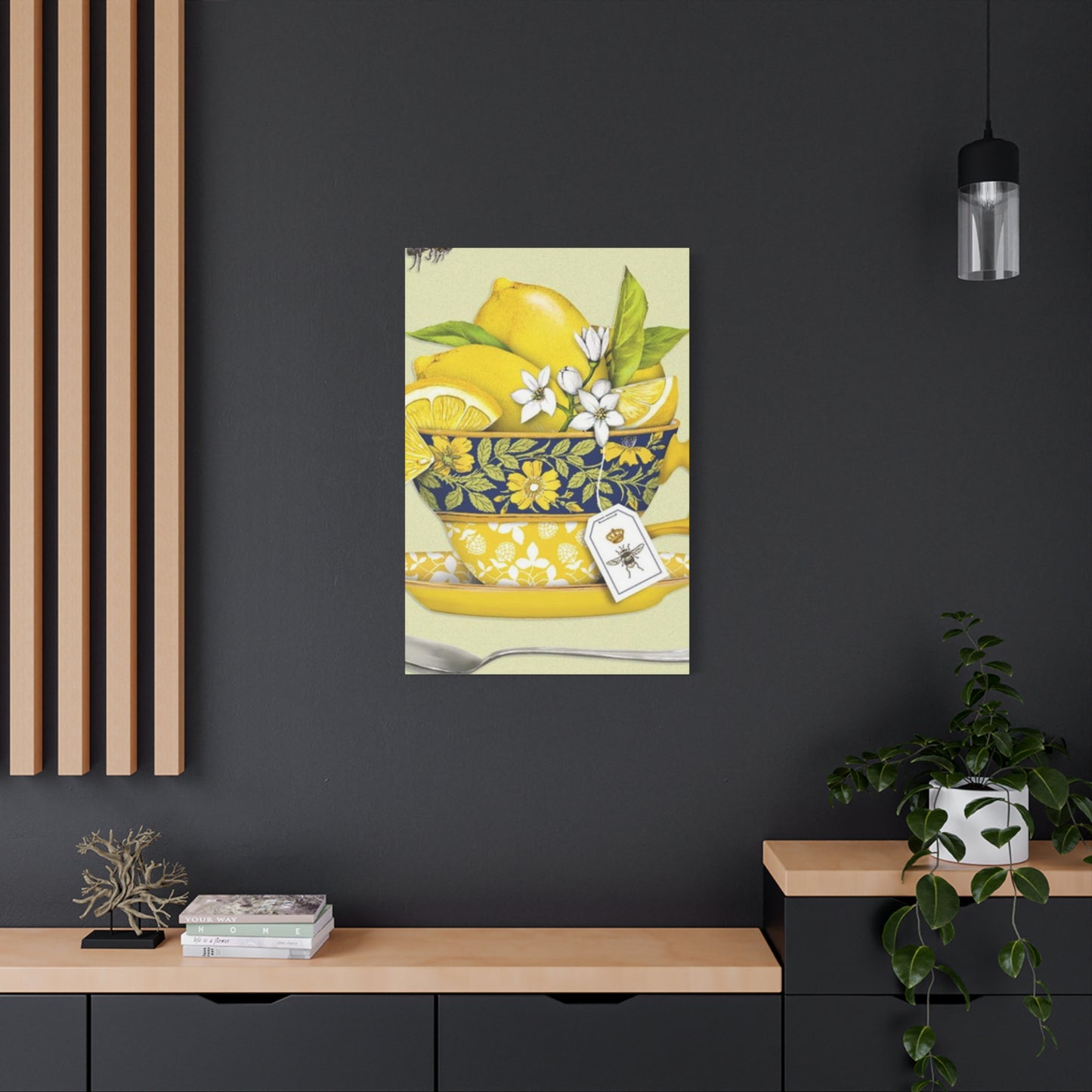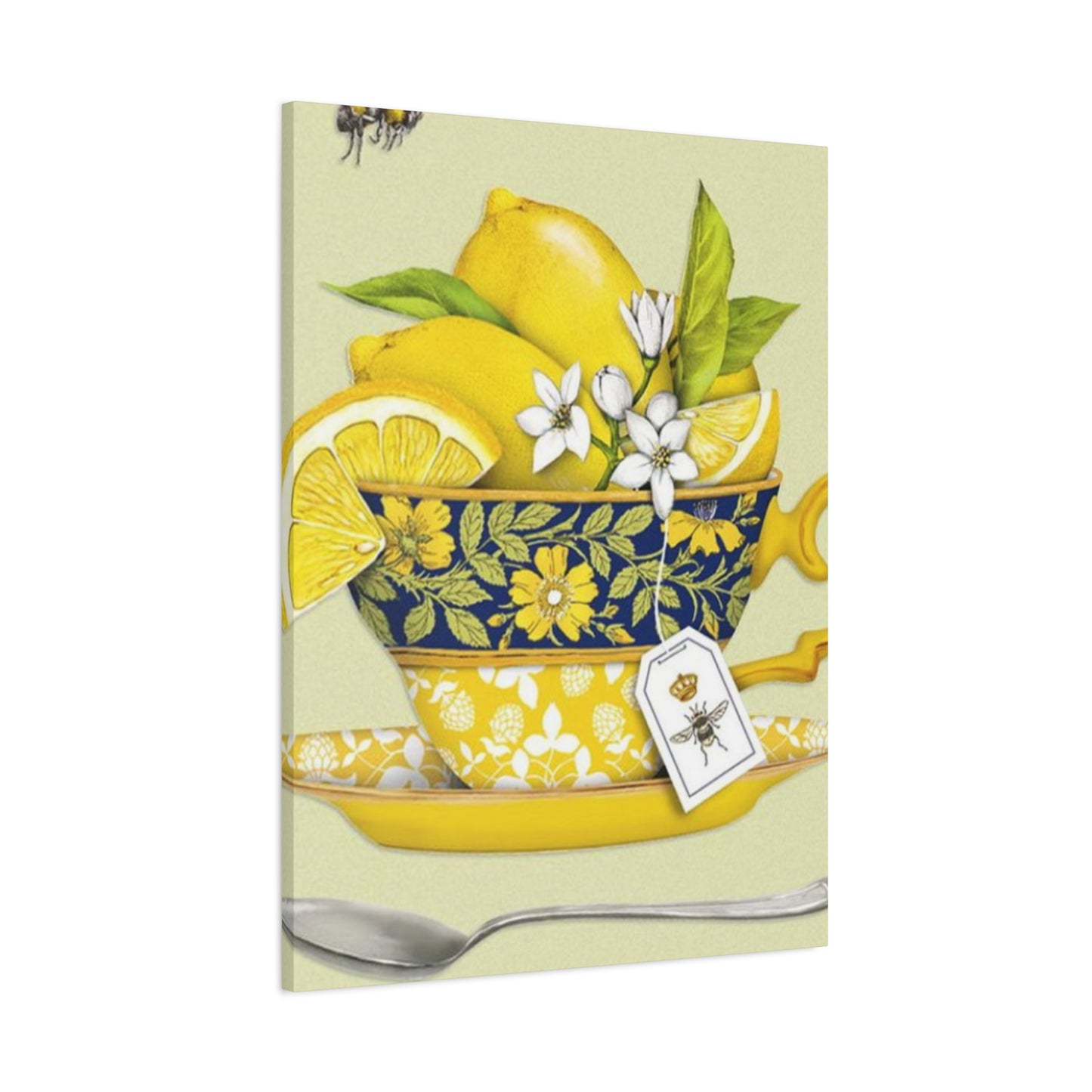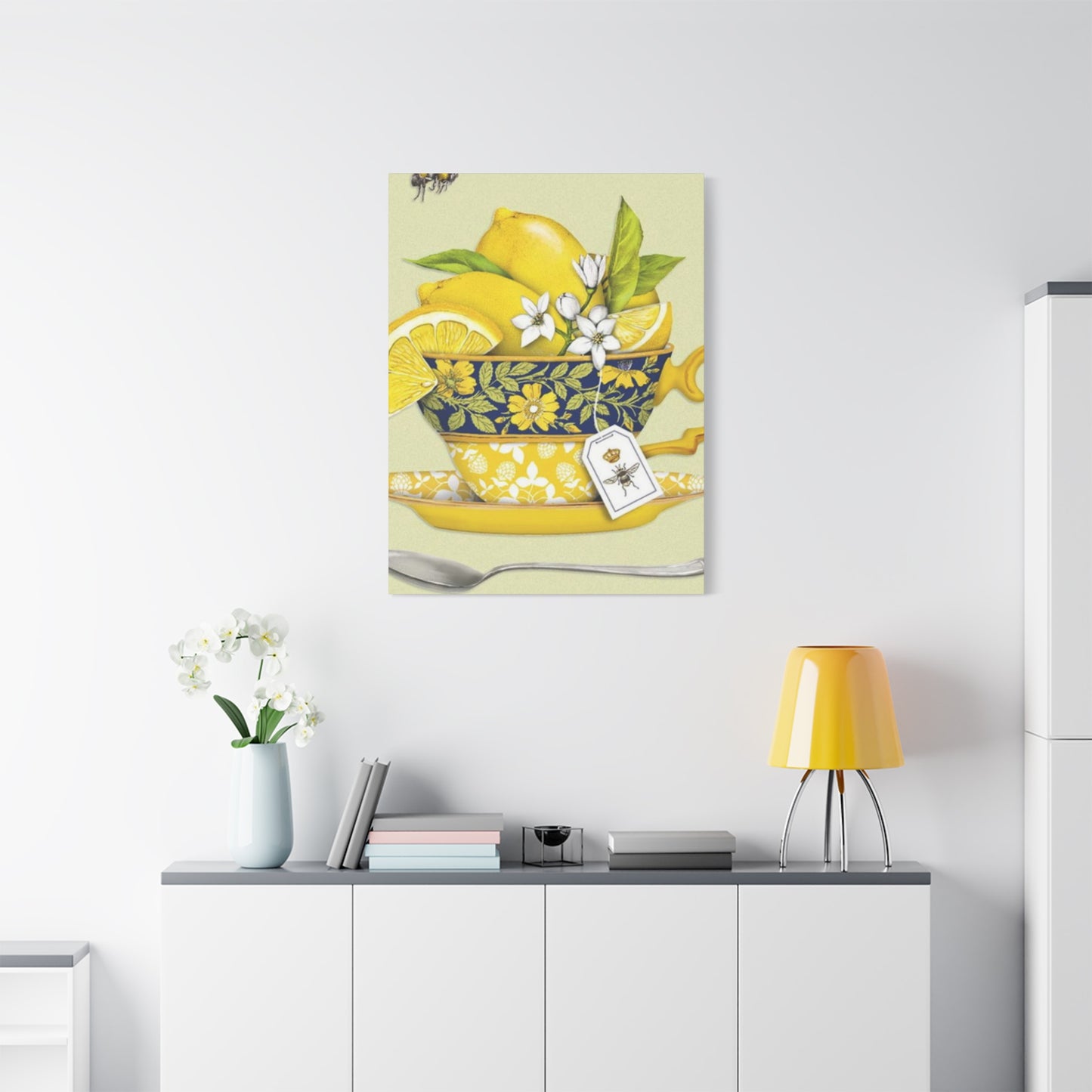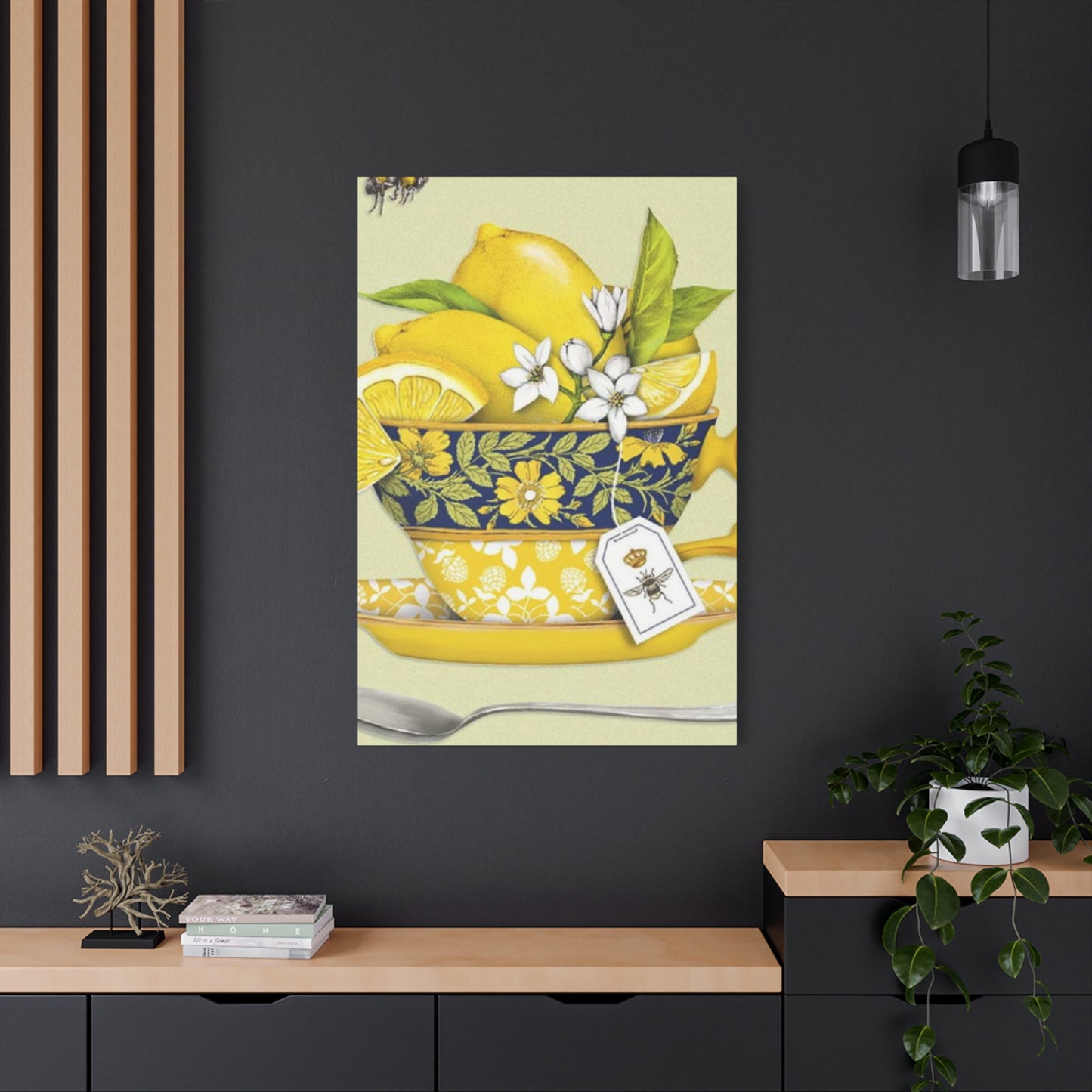Infuse Your Space with Vibrant Energy Through Lemon Wall Art
The transformative power of citrus-inspired kitchen wall prints has revolutionized how homeowners approach their culinary environments. These vibrant decorative elements bring an instant burst of freshness and energy to any cooking area, creating an atmosphere that celebrates both form and function. The appeal of citrus artwork extends far beyond mere aesthetics, touching on psychological benefits that include mood enhancement, appetite stimulation, and the creation of welcoming gathering areas.
Citrus-inspired wall prints have gained tremendous popularity due to their versatility and universal appeal. Whether your kitchen follows a contemporary minimalist approach, embraces rustic farmhouse charm, or showcases sleek modern lines, lemon-themed artwork seamlessly integrates into diverse decorative schemes. The natural brightness of citrus colors complements various color palettes, from neutral whites and grays to bold blues and greens, making these prints an excellent choice for homeowners seeking flexible decorative solutions.
The psychological impact of citrus imagery cannot be overstated. Scientific studies have demonstrated that yellow and orange tones associated with citrus fruits can increase energy levels, promote creativity, and enhance overall well-being. In kitchen environments where families gather to prepare meals and share conversations, these positive psychological effects create more enjoyable and productive culinary experiences. The organic shapes and natural patterns found in citrus artwork also contribute to stress reduction and mental clarity.
Modern printing technologies have made high-quality citrus wall prints more accessible than ever before. Advanced digital printing processes ensure vibrant color reproduction that captures the natural luminosity of fresh lemons, oranges, and limes. Various substrates, including canvas, metal, acrylic, and traditional paper, offer different aesthetic qualities and durability characteristics, allowing homeowners to select options that best suit their specific needs and preferences.
The market for citrus-themed wall art continues to expand as more people recognize the value of incorporating natural elements into their living environments. This growth has led to increased artistic innovation, with contemporary artists exploring new techniques and interpretations of classic citrus motifs. From photorealistic representations to abstract interpretations, the range of available styles ensures that every homeowner can find citrus wall art that resonates with their personal aesthetic vision.
Understanding Vibrant Yellow Lemon Decor Ideas
Vibrant yellow lemon decor ideas encompass a wide spectrum of creative approaches that harness the energizing power of this beloved citrus fruit. The psychological impact of yellow extends beyond simple color theory, triggering associations with sunshine, warmth, and optimism that can transform any living environment. When incorporated thoughtfully into home decor, yellow lemon motifs create focal points that draw attention while maintaining harmony with surrounding elements.
The versatility of yellow lemon decor allows for both subtle and dramatic applications. Subtle approaches might include small accent pieces featuring delicate lemon illustrations, while more dramatic implementations could showcase large-scale artwork that dominates entire wall surfaces. The key to successful lemon decor lies in understanding how different shades and intensities of yellow interact with existing color schemes and lighting conditions.
Contemporary lemon decor ideas often incorporate mixed media approaches that combine traditional illustrative techniques with modern graphic design principles. These hybrid approaches create visually interesting pieces that appeal to diverse aesthetic preferences while maintaining the freshness and vitality associated with citrus imagery. Artists frequently experiment with layering techniques, combining watercolor backgrounds with crisp line work or incorporating photographic elements into illustrated compositions.
The seasonal appeal of lemon decor makes it particularly attractive to homeowners who enjoy updating their decorative schemes throughout the year. While citrus motifs work beautifully in spring and summer settings, their warm yellow tones also provide cheerful contrast during darker autumn and winter months. This year-round versatility makes lemon decor a sound investment for those seeking decorative elements that remain relevant across changing seasons.
Color psychology research indicates that yellow stimulates mental activity and promotes communication, making lemon-themed decor particularly effective in social areas like kitchens, dining rooms, and family rooms. The brightness of lemon yellow can also help smaller rooms appear larger and more open, creating an illusion of expanded living areas. This optical effect proves especially valuable in compact urban dwellings where maximizing perceived dimensions is crucial.
The cultural associations with lemons contribute additional layers of meaning to decorative applications. In many cultures, lemons symbolize purification, freshness, and abundance, qualities that resonate strongly with contemporary lifestyle aspirations. These positive associations enhance the emotional impact of lemon decor, creating environments that feel not only visually appealing but also emotionally nourishing.
Modern manufacturing techniques have made vibrant yellow lemon decor more durable and fade-resistant than ever before. High-quality pigments and protective coatings ensure that artwork maintains its brilliant coloration even when exposed to direct sunlight or kitchen moisture. This durability makes lemon decor practical for high-use areas where traditional artwork might suffer from environmental exposure.
Exploring Minimalist Lemon Illustrations
Minimalist lemon illustrations represent the perfect marriage of contemporary design sensibilities and timeless natural beauty. This artistic approach strips away unnecessary details while preserving the essential characteristics that make lemon imagery instantly recognizable and emotionally resonant. The power of minimalist design lies in its ability to communicate maximum impact through minimal elements, creating artwork that feels both sophisticated and approachable.
The principles of minimalist design applied to lemon illustrations focus on clean lines, simplified forms, and strategic use of negative areas. These elements work together to create compositions that feel uncluttered and serene while maintaining the vibrancy and freshness associated with citrus fruits. The reduction of visual complexity allows viewers to appreciate the inherent beauty of lemon forms without distraction from extraneous decorative elements.
Color palettes in minimalist lemon illustrations typically employ limited selections of carefully chosen hues. Rather than attempting to reproduce the full spectrum of colors found in actual lemons, minimalist artists might use just two or three strategic color choices to suggest the fruit's essential character. This restraint creates more harmonious compositions that integrate seamlessly into contemporary living environments without overwhelming existing decorative schemes.
The geometric qualities of lemons make them particularly well-suited to minimalist interpretation. The oval form, distinctive texture patterns, and characteristic stem and leaf shapes can be reduced to their most essential geometric components while retaining immediate recognition factor. This geometric abstraction appeals to contemporary sensibilities while maintaining connection to natural forms that humans instinctively find appealing.
Negative space plays a crucial role in minimalist lemon illustrations, with artists using empty areas as active compositional elements rather than simply background fill. Strategic placement of negative areas creates visual breathing room that allows the simplified lemon forms to achieve maximum impact. This technique also helps create sense of balance and proportion that contributes to the overall calming effect of minimalist design.
Contemporary minimalist lemon illustrations often incorporate subtle texture variations that add visual interest without compromising the clean aesthetic. These textures might be suggested through slight variations in line weight, gentle gradients, or carefully applied dot patterns that reference the natural dimpled texture of lemon skin. Such details add sophistication while maintaining the uncluttered feel essential to minimalist success.
The scalability of minimalist lemon illustrations makes them adaptable to various decorative applications. Simple compositions translate effectively from small accent pieces to large statement walls, maintaining their visual coherence across different sizes. This scalability provides homeowners with flexibility in how they incorporate minimalist lemon artwork into their living environments.
Digital design tools have revolutionized the creation and reproduction of minimalist lemon illustrations. Vector-based graphics ensure clean lines and perfect geometric forms while allowing for infinite scalability without quality loss. These technical advantages make minimalist lemon illustrations particularly suitable for contemporary printing methods and diverse substrate applications.
The Charm of Lemon-Themed Fruit Wall Art
Lemon-themed fruit wall art encompasses a broader category that includes various citrus fruits while maintaining lemons as the primary focus. This approach creates opportunities for more complex compositions that celebrate the entire citrus family while highlighting the particular appeal of lemon imagery. The combination of different citrus varieties adds visual variety and color range while maintaining thematic coherence.
The botanical accuracy often found in lemon-themed fruit wall art appeals to viewers who appreciate detailed representation of natural forms. Artists working in this genre frequently study actual fruit specimens, capturing subtle variations in shape, texture, and coloration that make each piece feel authentic and scientifically informed. This attention to botanical detail creates educational value alongside decorative appeal.
Seasonal variations in lemon-themed fruit wall art reflect the natural growing cycles and harvest times of different citrus varieties. Some compositions might emphasize the bright freshness of spring growth, while others capture the golden abundance of autumn harvests. These seasonal interpretations allow homeowners to select artwork that aligns with their preferred seasonal aesthetic or to rotate pieces throughout the year.
The historical tradition of fruit painting provides rich context for contemporary lemon-themed wall art. Classical still life traditions established many of the compositional and technical approaches that continue to influence modern citrus artwork. Contemporary artists often reference these historical precedents while incorporating modern techniques and aesthetic sensibilities, creating pieces that feel both timeless and contemporary.
Mixed citrus compositions in lemon-themed wall art create opportunities for more complex color relationships and visual rhythms. The interplay between yellow lemons, orange oranges, and green limes creates natural color harmony while providing sufficient contrast to maintain visual interest. These multi-fruit compositions often work particularly well in larger format applications where the increased visual complexity can be fully appreciated.
The symbolic richness of fruit imagery adds layers of meaning to lemon-themed wall art. Beyond their immediate visual appeal, fruits carry associations with abundance, health, vitality, and natural cycles that resonate with contemporary lifestyle values. These symbolic dimensions enhance the emotional impact of fruit wall art, creating decorative elements that feel meaningful as well as beautiful.
Commercial applications of lemon-themed fruit wall art have expanded significantly in recent years. Restaurants, cafes, and food-related businesses frequently incorporate citrus artwork to reinforce their brand identity and create appealing customer environments. This commercial success has driven innovation in artistic approaches and production techniques, benefiting residential consumers through improved quality and variety.
The photographic interpretation of lemon-themed fruit wall art offers hyper-realistic alternatives to traditional illustrative approaches. High-resolution photography can capture minute details of fruit textures, natural lighting effects, and compositional arrangements that would be difficult to achieve through other artistic media. These photographic approaches appeal particularly to viewers who prefer realistic representation over stylized interpretation.
Capturing Summer Vibes with Lemon Prints
Summer vibes with lemon prints capture the essence of warm weather leisure and outdoor living through carefully crafted visual compositions. These artworks evoke memories of sunny afternoons, refreshing beverages, and the casual elegance of summer entertaining. The association between lemons and summer extends beyond mere seasonal timing to encompass lifestyle aspirations and emotional responses to warm weather activities.
The color psychology of summer lemon prints emphasizes bright, energetic hues that mirror the intensity of summer sunlight. These vibrant colors create instant mood elevation and energy enhancement, making summer-themed lemon prints particularly effective in areas where people gather for social activities. The brightness of these colors can also help interior environments feel more connected to outdoor settings, especially valuable in urban environments with limited natural light.
Compositional approaches in summer lemon prints often incorporate elements that reinforce seasonal associations. Background elements might suggest beach settings, garden environments, or outdoor dining scenarios. These contextual details help viewers immediately understand the seasonal reference while creating more immersive visual experiences that transport observers to idealized summer settings.
The lifestyle associations with summer lemon prints extend beyond visual aesthetics to encompass broader cultural values around relaxation, leisure, and enjoyment. These prints often appear in vacation homes, outdoor entertainment areas, and other environments associated with recreational activities. The psychological impact of these associations can help create more relaxing and enjoyable living environments even in everyday residential settings.
Beverage imagery frequently appears in summer lemon prints, capitalizing on the strong association between lemons and refreshing drinks. Lemonade, citrus cocktails, and flavored water imagery reinforces the cooling and refreshing qualities associated with summer beverages. These compositional elements create immediate sensory associations that enhance the overall impact of the artwork.
The technical considerations for summer lemon prints include enhanced fade resistance and moisture protection, as these pieces often appear in areas with higher humidity or direct sunlight exposure. Advanced UV-resistant inks and protective coatings ensure that the vibrant colors maintain their intensity even under challenging environmental conditions. This durability makes summer lemon prints practical choices for outdoor entertainment areas and humid environments like bathrooms and kitchens.
Seasonal marketing of summer lemon prints creates opportunities for homeowners to refresh their decorative schemes with affordable accent pieces. The cyclical nature of seasonal decor allows for periodic updates that keep living environments feeling fresh and current. This approach also provides opportunities to experiment with different artistic styles and color combinations without making permanent commitments to expensive artwork.
The social media influence on summer lemon prints has been significant, with these cheerful images performing well in visual platforms that emphasize lifestyle and home decor content. This social media success has driven increased demand for summer-themed citrus artwork, leading to greater variety and innovation in available designs. The photogenic quality of lemon imagery makes it particularly suitable for sharing and display in digital environments.
Watercolor Lemon Canvas Designs
Watercolor lemon canvas designs represent one of the most popular and versatile approaches to citrus wall art. The fluid, organic nature of watercolor techniques perfectly complements the natural forms and vibrant colors of lemons, creating artwork that feels both sophisticated and approachable. The transparency and luminosity characteristic of watercolor media enhance the natural brightness of lemon subjects, resulting in pieces that seem to glow from within.
The technical properties of watercolor create unique visual effects that are particularly well-suited to lemon subjects. The medium's tendency toward soft edges and color bleeding mirrors the organic irregularities found in natural fruit forms. This technical compatibility means that watercolor lemon paintings often feel more naturalistic and less rigid than artwork created with more controlled media like oils or acrylics.
Contemporary watercolor lemon canvas designs often incorporate modern techniques that expand beyond traditional watercolor limitations. Mixed media approaches might combine watercolor with ink line work, gouache highlights, or even digital enhancement to create more complex and visually striking compositions. These hybrid techniques allow artists to capture both the softness of traditional watercolor and the precision needed for detailed botanical representation.
The color relationships possible in watercolor lemon designs offer extraordinary variety and subtlety. The medium's transparency allows for complex layering effects that create rich, nuanced color variations within individual lemon forms. These subtle color transitions contribute to the three-dimensional quality of successful watercolor lemon paintings, making the fruits appear to have actual volume and presence.
Canvas substrates for watercolor lemon designs require special consideration to prevent warping and color bleeding. Modern canvas preparations specifically designed for watercolor applications provide stable surfaces that maintain dimensional stability while allowing proper paint absorption. These technical improvements have made watercolor canvas paintings more durable and practical for home display applications.
The scale considerations for watercolor lemon canvas designs affect both artistic technique and visual impact. Smaller format pieces allow for intimate detail work and subtle color variations, while larger canvases permit more dramatic color washes and bold compositional arrangements. The choice of scale significantly influences the viewing experience and the role the artwork plays within its environment.
Framing options for watercolor lemon canvas designs must balance protection with aesthetic considerations. The delicate nature of watercolor requires protection from environmental factors while maintaining visual accessibility. Modern framing techniques using conservation-quality materials ensure long-term preservation while allowing the artwork's natural luminosity to remain visible and impactful.
The market for watercolor lemon canvas designs has expanded significantly as reproduction technologies have improved. High-quality digital reproduction can now capture the subtle color variations and texture qualities that make original watercolor paintings appealing. These reproduction advances have made watercolor lemon designs accessible to broader audiences while maintaining the essential visual qualities that make the medium distinctive.
Modern Lemon Art for Dining Rooms
Modern lemon art for dining rooms requires careful consideration of both aesthetic and functional factors that influence dining experiences. The choice of artwork for dining areas significantly impacts the atmosphere and mood of meal times, making the selection of appropriate lemon-themed pieces crucial for creating welcoming and appetizing environments. Modern approaches to lemon art emphasize clean lines, sophisticated color palettes, and compositional arrangements that complement contemporary dining furniture and lighting.
The scale considerations for dining room lemon art differ significantly from those appropriate for other living areas. Dining rooms typically feature larger wall areas and higher ceilings that can accommodate more substantial artwork pieces. This scale opportunity allows for dramatic lemon art installations that serve as focal points during dining experiences. The increased size also permits more detailed compositions that can be appreciated from various seating positions around dining tables.
Lighting interactions between modern lemon art and dining room illumination systems create important design considerations. The warm yellow tones characteristic of lemon imagery work particularly well with warm incandescent or LED lighting commonly used in dining areas. This color harmony enhances the appetite-stimulating properties of both the artwork and the lighting, creating more pleasant dining atmospheres.
Contemporary color theory applications in modern dining room lemon art often emphasize sophisticated palette relationships rather than simple bright yellows. These might include subtle gradients, complementary color accents, or monochromatic variations that create visual interest while maintaining the essential lemon character. Such refined approaches appeal to homeowners seeking artwork that feels both fresh and sophisticated.
The social aspects of dining room environments influence appropriate artistic choices for lemon-themed artwork. Pieces selected for dining areas should facilitate conversation rather than overwhelming it, suggesting moderate visual complexity and balanced compositional arrangements. The artwork should enhance the social dining experience without becoming distracting or dominating the environment.
Material considerations for dining room lemon art include resistance to food odors, humidity fluctuations, and potential splashing or staining. Modern protective coatings and substrate selections address these practical concerns while maintaining aesthetic quality. These technical improvements make contemporary lemon art more suitable for dining room applications than traditional artwork materials.
The cultural significance of fruit imagery in dining contexts adds layers of meaning to modern lemon art selections. Fruits have historically symbolized abundance, hospitality, and celebration in dining traditions across many cultures. These positive associations enhance the emotional impact of lemon art in dining rooms, creating environments that feel more welcoming and festive.
Installation considerations for modern dining room lemon art include viewing angles from various seating positions, relationship to windows and natural light sources, and coordination with dining furniture arrangements. Professional installation often ensures optimal positioning that maximizes visual impact while accommodating the functional requirements of dining room usage.
Creative Lemon Slice Patterns on Canvas
Creative lemon slice patterns on canvas offer unique opportunities to explore geometric and repetitive design elements while maintaining the natural appeal of citrus imagery. The cross-sectional view of lemon slices reveals intricate internal structures that translate beautifully into pattern-based compositions. These geometric qualities make lemon slice patterns particularly suitable for contemporary decorative applications that emphasize order, rhythm, and visual coherence.
The mathematical precision found in lemon slice geometry provides artists with naturally occurring patterns that feel both organic and structured. The radial segments, central core, and outer rim create concentric circles and radiating lines that can be emphasized, abstracted, or combined in various ways to create compelling pattern designs. This natural geometry eliminates the artificial feel that sometimes accompanies purely mathematical pattern constructions.
Color variation opportunities in lemon slice patterns extend far beyond simple yellow applications. The internal structures of lemons include subtle green tones in the rind, white pith areas, and translucent flesh segments that provide rich color palettes for pattern development. These natural color relationships create harmonious compositions that feel sophisticated and balanced.
Repetition strategies in lemon slice canvas patterns can emphasize regularity, variation, or controlled randomness depending on the desired visual effect. Regular grid arrangements create calm, orderly impressions suitable for formal environments, while varied arrangements might suggest more dynamic, organic compositions. The choice of repetition strategy significantly influences the psychological impact of the finished artwork.
Scale variations within individual lemon slice patterns add visual interest and depth to otherwise regular compositions. Mixing different sized slices or emphasizing certain pattern elements through scale changes creates focal points and visual hierarchy within the overall design. These scale manipulations can guide viewer attention and create more engaging visual experiences.
The textural possibilities in lemon slice patterns include opportunities to suggest the various surface qualities found in actual fruit cross-sections. The smooth skin, bumpy pith, and segmented flesh areas each offer different textural characteristics that can be interpreted through various artistic techniques. These textural variations add tactile interest and visual complexity to pattern-based compositions.
Contemporary interpretation of lemon slice patterns often incorporates modern graphic design principles such as color blocking, gradient applications, and geometric abstraction. These approaches create artwork that feels current and sophisticated while maintaining connection to natural source material. The combination of natural and graphic elements appeals to diverse aesthetic preferences.
Digital design tools have revolutionized the creation and reproduction of lemon slice pattern artwork. Vector-based graphics ensure perfect geometric precision while allowing for infinite pattern repetition and scale adjustment. These technical capabilities enable artists to create complex pattern arrangements that would be difficult or impossible to achieve through traditional artistic methods.
Fresh Citrus Wall Decor for Cafes
Fresh citrus wall decor for cafes requires balancing aesthetic appeal with commercial functionality and brand reinforcement. Cafe environments demand artwork that creates welcoming atmospheres while supporting business objectives such as customer retention, brand identity, and sales enhancement. Citrus imagery naturally aligns with food service establishments by suggesting freshness, quality, and healthful choices that appeal to contemporary consumer preferences.
The psychological impact of citrus wall decor in commercial food service environments has been extensively studied and documented. The bright, energetic colors associated with citrus fruits can increase customer energy levels and encourage longer stay times. This psychological effect benefits cafe businesses by creating environments where customers feel comfortable lingering, potentially leading to increased spending and customer satisfaction.
Scale considerations for cafe citrus wall decor must accommodate various viewing distances and customer flow patterns. Pieces visible from across the room require different scale relationships than artwork intended for intimate seating areas. Successful cafe decor often incorporates multiple scale relationships to create visual interest and accommodate different customer experiences within the same environment.
The durability requirements for cafe wall decor exceed those of residential applications due to higher humidity levels, temperature fluctuations, and increased exposure to food-related contaminants. Modern protective coatings and substrate selections address these commercial challenges while maintaining visual appeal. These technical improvements make citrus wall decor practical for demanding commercial environments.
Brand integration opportunities with citrus wall decor allow cafes to reinforce their identity and values through artistic choices. Establishments emphasizing fresh, natural ingredients can use citrus artwork to visually communicate these brand messages. The artistic style, color choices, and compositional approaches can all contribute to brand reinforcement while providing aesthetic benefits.
Customer photography considerations have become increasingly important as social media sharing influences business success. Citrus wall decor that photographs well and creates appealing backgrounds for customer selfies and food photography can contribute to organic marketing through customer-generated content. This secondary benefit adds value beyond the immediate aesthetic and atmospheric contributions.
The seasonal flexibility of citrus wall decor provides commercial advantages by remaining appropriate throughout the year. Unlike seasonal decorative themes that require periodic updates, citrus imagery maintains relevance across changing seasons. This consistency reduces maintenance costs while ensuring continuous brand message reinforcement.
Installation logistics for cafe citrus wall decor must consider customer safety, accessibility requirements, and building code compliance. Professional installation ensures that artwork placement meets commercial standards while maximizing aesthetic impact. These installation considerations affect both artwork selection and placement strategies within commercial environments.
Playful Lemon Art for Kids' Rooms
Playful lemon art for kids' rooms opens up entirely different creative possibilities focused on imagination, education, and developmental support. Children's artwork serves multiple functions beyond simple decoration, including cognitive development, emotional comfort, and educational reinforcement. Lemon-themed artwork for children can combine the natural appeal of fruit imagery with playful elements that engage young minds and support healthy development.
The educational potential of lemon art in children's rooms extends to multiple learning areas including botany, nutrition, color theory, and cultural studies. Artwork that accurately depicts lemon growing processes, nutritional benefits, or cultural uses can reinforce classroom learning while providing visual interest. This educational component adds value for parents seeking decorative elements that support their children's development.
Character development possibilities with playful lemon art allow for creative interpretations that transform simple fruit imagery into engaging personalities and stories. Anthropomorphized lemons with facial expressions, clothing, or action poses can create emotional connections with children while maintaining the basic appeal of citrus imagery. These character-based approaches often become focal points for imaginative play and storytelling.
Color psychology considerations for children's lemon art emphasize the mood-enhancing and energy-supporting properties of yellow hues. The bright, cheerful colors associated with lemons can contribute to positive emotional environments that support healthy sleep patterns and creative play. However, color intensity must be balanced to avoid overstimulation, particularly in sleeping areas.
Developmental appropriateness of lemon art varies significantly across different childhood stages. Toddler rooms might benefit from simple, high-contrast lemon images that support visual development, while older children can appreciate more complex compositions that challenge observation skills and artistic appreciation. Understanding these developmental differences ensures artwork selections that truly benefit young viewers.
Safety considerations for children's room lemon art include non-toxic materials, secure mounting systems, and absence of small detachable parts that might present choking hazards. Modern art production specifically designed for children's environments addresses these safety concerns while maintaining visual appeal and durability. These safety features provide peace of mind for parents while ensuring child safety.
The interactive potential of playful lemon art can include elements that encourage physical interaction or imaginative engagement. Textured surfaces, moveable components, or artwork that changes under different lighting conditions can provide sensory experiences that support developmental goals. These interactive elements make artwork more engaging while providing educational opportunities.
Durability requirements for children's room artwork exceed standard residential applications due to potential rough handling, cleaning needs, and extended exposure to various childhood activities. Protective coatings and robust substrate selections ensure that lemon art maintains its appeal despite the challenging environment of active children's rooms.
Professional Framed Lemon Photography Prints
Professional framed lemon photography prints represent the highest quality approach to citrus wall art, combining technical excellence with sophisticated presentation methods. Professional photography captures details, textures, and lighting effects that other artistic media cannot replicate, creating artwork that feels both realistic and elevated. The combination of photographic excellence with professional framing creates investment-quality pieces suitable for discerning collectors and sophisticated decorative applications.
The technical considerations in professional lemon photography include lighting design, composition planning, and post-processing techniques that maximize visual impact while maintaining natural authenticity. Professional photographers use controlled lighting setups to emphasize the three-dimensional qualities of lemons while avoiding harsh shadows or unnatural color casts. This technical expertise results in photographs that surpass casual snapshots in both visual appeal and artistic merit.
Print quality standards for professional lemon photography exceed those of standard commercial printing through the use of archival inks, premium substrates, and color-calibrated printing systems. These technical improvements ensure that printed photographs maintain their color accuracy and tonal range while providing longevity that justifies investment in quality artwork. The difference in print quality is immediately apparent when comparing professional prints to standard commercial alternatives.
Framing considerations for professional lemon photography prints require conservation-quality materials and techniques that protect the photograph while enhancing its presentation. Acid-free matting materials, UV-filtering glazing, and proper mounting techniques ensure that photographs maintain their quality over time. Professional framing also provides opportunities to customize presentation through mat colors, frame styles, and glazing options that complement specific decorative environments.
The artistic interpretation in professional lemon photography can range from documentary realism to creative abstraction while maintaining photographic authenticity. Skilled photographers use techniques such as selective focus, creative lighting, and unusual perspectives to create images that transcend simple documentation. These artistic approaches create photographs that function as fine art while retaining the immediate recognition factor of photographic media.
Scale flexibility in professional lemon photography prints allows for customization based on intended display environments and budget considerations. Professional printing equipment can produce anything from intimate small-format prints to dramatic large-scale installations without compromising image quality. This scale flexibility ensures that professional lemon photography can work in various architectural contexts and decorative schemes.
The investment value of professional framed lemon photography prints includes both immediate aesthetic benefits and potential long-term appreciation. Limited edition prints from recognized photographers can maintain or increase their value over time, making them both decorative purchases and potential investments. This investment potential appeals to collectors who value both aesthetic and financial considerations in their art acquisitions.
Market trends in professional lemon photography reflect broader movements in contemporary art and home decor. Current preferences tend toward more naturalistic approaches that emphasize the inherent beauty of the subject matter rather than heavy manipulation or stylization. These trends influence both photographic techniques and framing presentations to create pieces that feel current and relevant.
Refreshing Home Accents with Lemon Art
Refreshing home accents with lemon art involves strategic placement and selection of citrus-themed pieces to enhance overall living environments without overwhelming existing decorative schemes. The key to successful accent integration lies in understanding how lemon artwork interacts with other decorative elements to create cohesive and refreshing atmospheric improvements. This approach requires balancing visual impact with decorative harmony to achieve environments that feel both fresh and sophisticated.
The strategic placement of lemon art accents can dramatically improve room atmospheres through color enhancement, visual interest creation, and mood elevation. Small lemon-themed pieces placed in unexpected locations often create delightful surprises that enhance the overall living experience. These accent applications might include powder room artwork, hallway galleries, or bedroom reading nook decorations that provide visual interest without dominating their environments.
Color coordination strategies for lemon art accents involve understanding how citrus yellows interact with existing color schemes to create harmonious or contrasting relationships as desired. Lemon artwork can complement warm color palettes by reinforcing yellow undertones, or provide refreshing contrast in cool-toned environments. The ability to use lemon art for both harmony and contrast provides decorative flexibility that appeals to various design preferences.
Seasonal rotation possibilities with lemon art accents allow homeowners to refresh their environments throughout the year without major decorative overhauls. Lemon pieces can be moved between locations, combined with different accent elements, or temporarily stored to create cyclical decorative changes. This flexibility makes lemon art a practical choice for homeowners who enjoy periodic decorative refreshment.
The psychological benefits of refreshing home accents through lemon art include mood enhancement, energy increase, and general sense of environmental improvement. The bright, cheerful associations with lemon imagery can counteract seasonal depression, provide daily mood boosts, and create more positive living environments. These psychological benefits contribute to overall quality of life improvements that justify investment in quality lemon artwork.
Budget considerations for lemon art accents make this approach accessible to homeowners with various financial constraints. Small accent pieces require less investment than major artwork purchases while still providing significant visual impact. This accessibility allows for gradual collection building and experimentation with different artistic styles and placements.
The cumulative effect of multiple lemon art accents throughout a home creates thematic continuity that unifies diverse living areas. This approach can make homes feel more coordinated and intentionally designed while maintaining individual room character. The repetition of lemon motifs in various forms and scales creates visual rhythm that enhances overall decorative coherence.
Maintenance considerations for lemon art accents are generally minimal due to the non-fading properties of modern printing techniques and protective coatings. Regular dusting and occasional cleaning maintain the visual appeal of lemon artwork with minimal effort. This low maintenance requirement makes lemon art accents practical for busy households that value beautiful environments without high upkeep demands.
Creative Gift Ideas: Lemon Canvas Wall Art
Creative gift ideas featuring lemon canvas wall art offer thoughtful presentation opportunities that combine aesthetic appeal with practical utility. Lemon-themed artwork makes excellent gifts due to its universal appeal, positive associations, and versatility across different decorative styles. The gift potential of lemon canvas art extends beyond simple present-giving to include housewarming gifts, hostess presents, and celebration commemoratives that recipients will genuinely appreciate and use.
The personal meaning potential in lemon canvas art gifts allows for customization based on recipient interests, memories, or lifestyle preferences. Lemon artwork might commemorate shared experiences, reference favorite recipes, or simply reflect the giver's understanding of the recipient's aesthetic preferences. This personal connection transforms simple artwork into meaningful gifts that carry emotional significance beyond their immediate visual appeal.
Presentation strategies for lemon canvas art gifts include professional wrapping, accompanying care instructions, and suggested placement recommendations that help recipients maximize their enjoyment of the artwork. Gift presentations might also include information about the artist, artistic techniques, or symbolic meanings associated with lemon imagery. These additional elements enhance the gift-giving experience while providing educational value.
Size considerations for gift lemon canvas art must balance impact with practicality, ensuring that gifts are substantial enough to feel significant while remaining manageable for recipients to transport, store, or display. Medium-sized pieces often provide optimal balance between visual impact and practical considerations, making them ideal for gift applications.
The occasion appropriateness of lemon canvas art gifts spans numerous celebration types from birthdays and anniversaries to housewarmings and graduations. The cheerful, optimistic associations with lemon imagery make these gifts appropriate for positive occasions while the natural themes provide comfort during difficult times. This versatility makes lemon art a reliable gift choice for various situations.
Budget flexibility in lemon canvas art gifts accommodates various spending levels through different sizes, framing options, and artistic approaches. High-quality reproductions of professional artwork provide excellent value while original pieces offer more exclusive gift options. This range ensures that appropriate lemon art gifts are available for different budgets and relationships.
The recipient demographics for lemon canvas art gifts are remarkably broad, appealing to various ages, genders, and lifestyle preferences. The natural themes appeal to environmentally conscious recipients, the bright colors attract those who enjoy cheerful environments, and the classic subject matter appeals to traditional tastes. This broad appeal makes lemon art safe gift choices for recipients whose preferences might not be well known.
Packaging innovations for lemon canvas art gifts include protective materials that ensure safe transport while creating exciting unwrapping experiences. Custom packaging might incorporate lemon-themed elements that reinforce the gift theme while providing necessary protection. These presentation details enhance the overall gift experience and demonstrate thoughtfulness in gift selection and preparation.
Contemporary Approaches to Citrus Home Decor
Contemporary approaches to citrus home decor emphasize sophisticated color relationships, clean design lines, and innovative artistic interpretations that appeal to modern aesthetic sensibilities. These approaches move beyond traditional fruit painting techniques to incorporate current design trends, advanced printing technologies, and contemporary color theory applications. The result is citrus artwork that feels current and sophisticated while maintaining the timeless appeal of natural fruit imagery.
The minimalist influence on contemporary citrus decor focuses on essential forms and strategic color applications that create maximum impact through minimal elements. This approach might emphasize single lemon silhouettes against neutral backgrounds or geometric abstractions that reference citrus shapes without literal representation. The simplicity of minimalist approaches allows citrus artwork to integrate seamlessly into modern architectural environments.
Technology integration in contemporary citrus decor includes digital enhancement techniques, mixed media applications, and innovative printing substrates that expand creative possibilities. Artists might combine traditional artistic techniques with digital manipulation to create hybrid works that feel both handcrafted and technologically current. These technical innovations provide new aesthetic possibilities while maintaining connection to natural source material.
The sustainable design movement has influenced contemporary citrus decor through emphasis on environmentally friendly materials, production methods, and longevity considerations. Eco-conscious consumers seek artwork created with sustainable practices and materials that minimize environmental impact. This consideration has led to innovations in printing inks, substrate selection, and framing materials that appeal to environmentally aware consumers.
Color theory applications in contemporary citrus decor explore complex relationships between citrus hues and current color trends. Modern approaches might emphasize unexpected color combinations, gradient applications, or monochromatic variations that create sophisticated visual effects. These advanced color relationships appeal to design-conscious consumers seeking artwork that reflects current aesthetic trends.
The global influence on contemporary citrus decor incorporates artistic traditions and aesthetic approaches from various cultures that use citrus imagery. Japanese minimalism, Mediterranean abundance themes, and tropical modernism all contribute to contemporary interpretations of citrus artwork. This global perspective creates more diverse and interesting artistic approaches while honoring various cultural traditions.
Installation innovations for contemporary citrus decor include floating mount systems, track lighting integration, and modular arrangement possibilities that accommodate changing decorative preferences. These installation approaches reflect contemporary preferences for flexibility and adaptation rather than permanent decorative commitments. The ability to easily modify arrangements appeals to modern lifestyles that value change and experimentation.
Conclusion:
Lemon wall art offers a fresh, vibrant, and uplifting way to brighten your home décor. The sunny yellows and crisp citrus imagery bring an instant boost of energy and positivity to any room, making lemon-inspired art a perfect choice for those looking to create an inviting and cheerful atmosphere. Whether your style leans toward modern minimalism, rustic farmhouse, or eclectic charm, lemon wall art effortlessly adds a splash of brightness and natural beauty.
The cheerful hues of lemon prints naturally stimulate feelings of happiness and warmth. They awaken the senses and evoke memories of sunny days, refreshing drinks, and lively gatherings. This emotional connection is part of what makes citrus-inspired décor so appealing—beyond aesthetics, it influences mood and ambiance, transforming your living spaces into joyful retreats.
Lemon-themed canvas prints and wall décor offer versatility in styling. They can serve as bold statement pieces in kitchens, dining areas, or sunrooms, where the theme perfectly complements the spirit of food and togetherness. Alternatively, smaller lemon prints can be integrated into gallery walls or mixed-media arrangements, adding pops of color that enliven neutral or muted interiors. Their bright, crisp tones blend well with natural textures like wood and wicker, as well as contemporary metals and ceramics.
Beyond their visual appeal, lemon wall art symbolizes freshness, renewal, and vitality—qualities that resonate strongly in home environments where comfort and rejuvenation are key. Incorporating citrus elements also aligns with wellness-focused design trends that emphasize natural motifs and positive energy flow, making lemon décor both stylish and meaningful.
The wide variety of lemon wall art styles available today—from realistic botanical illustrations and watercolor paintings to playful graphic designs and abstract interpretations—means there’s something for everyone. Whether you prefer subtle elegance or bold creativity, lemon-themed art can be tailored to fit your unique personality and décor goals.
In conclusion, lemon wall art is more than just decoration; it’s a vibrant expression of life and joy that brightens your home inside and out. By choosing citrus-inspired prints, you invite warmth, freshness, and an invigorating spirit into your everyday surroundings. Embrace the zest of lemons and transform your space into a lively, welcoming haven that reflects your sunny disposition.

















